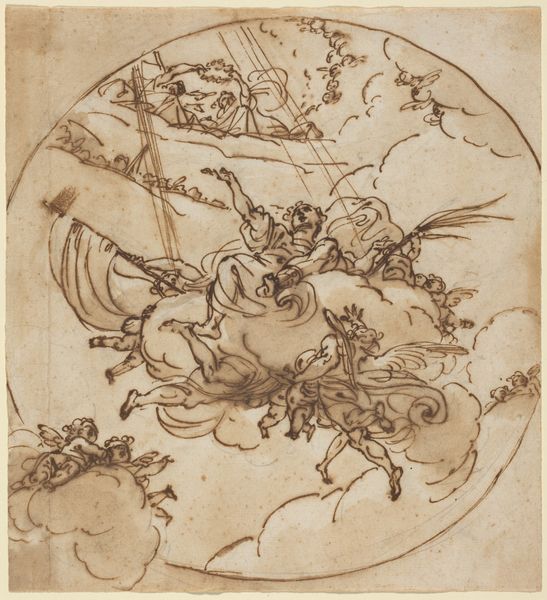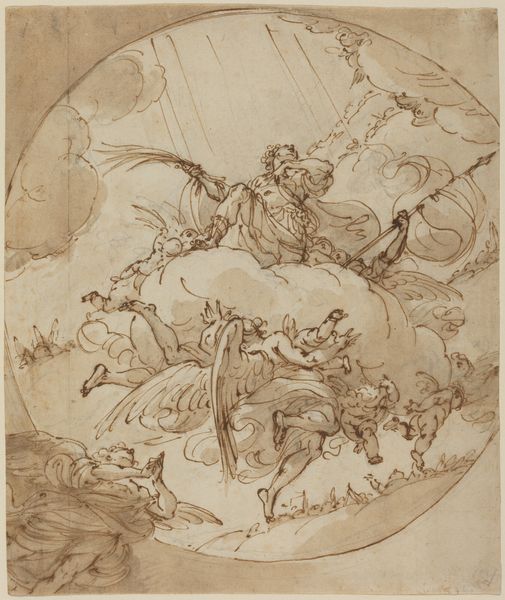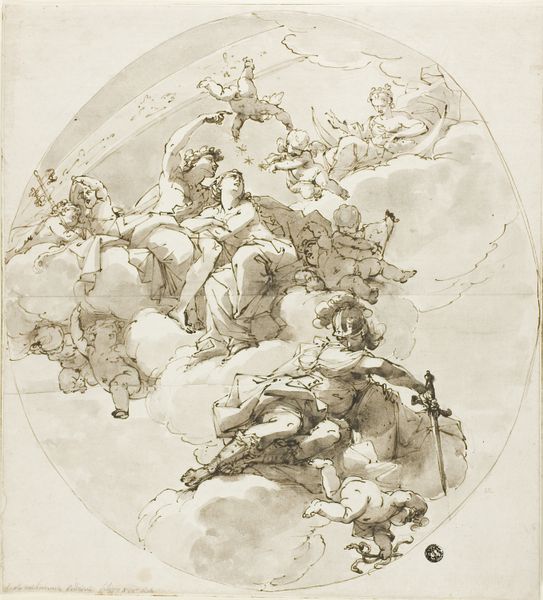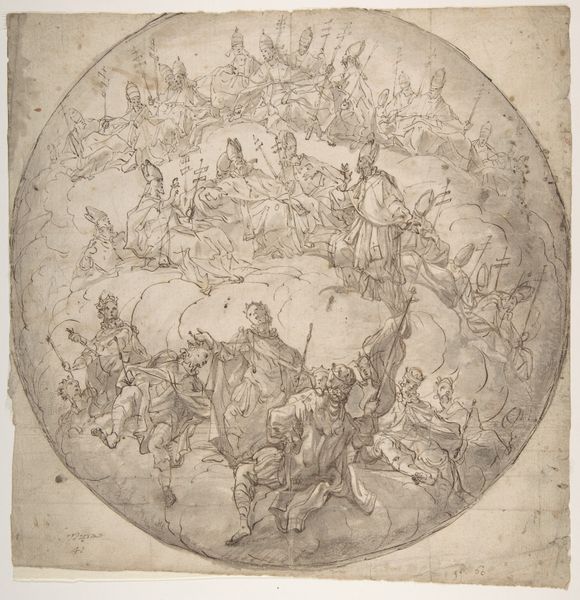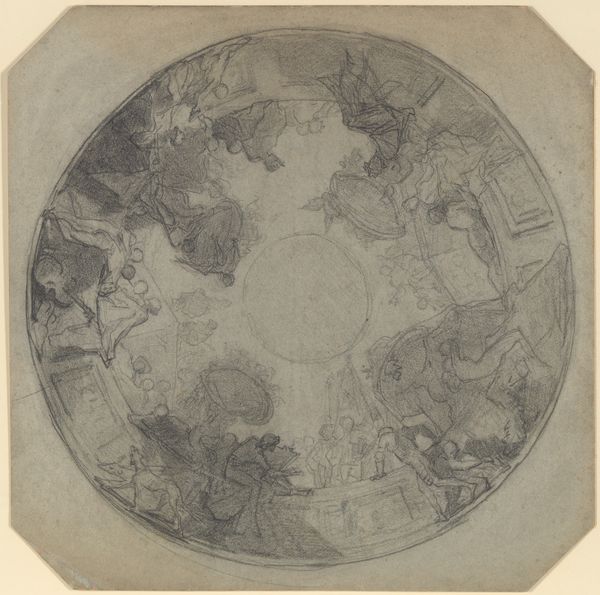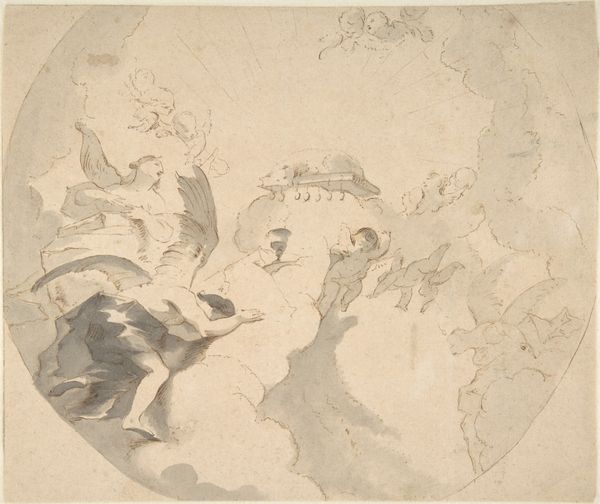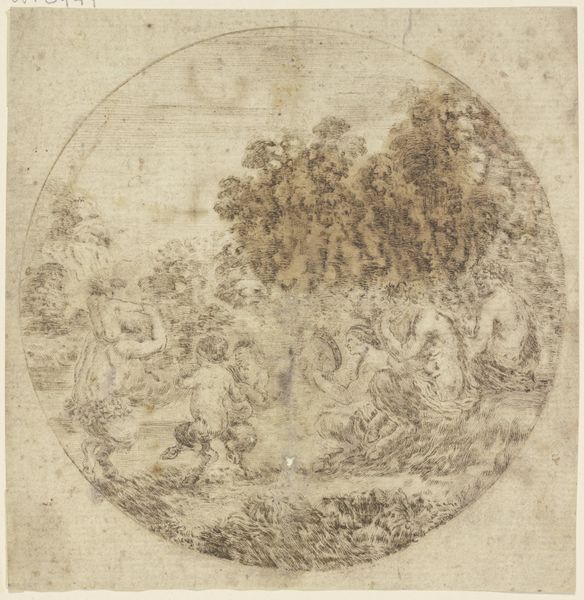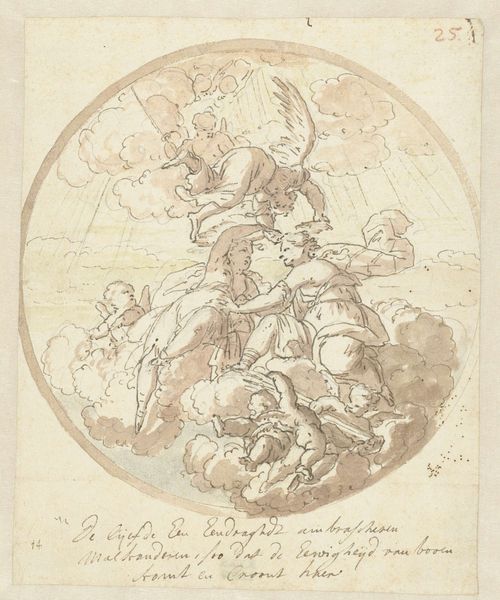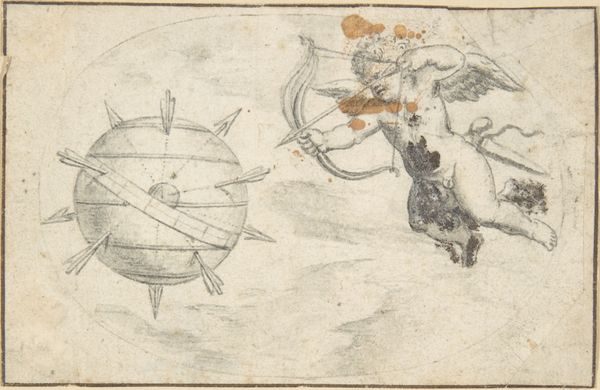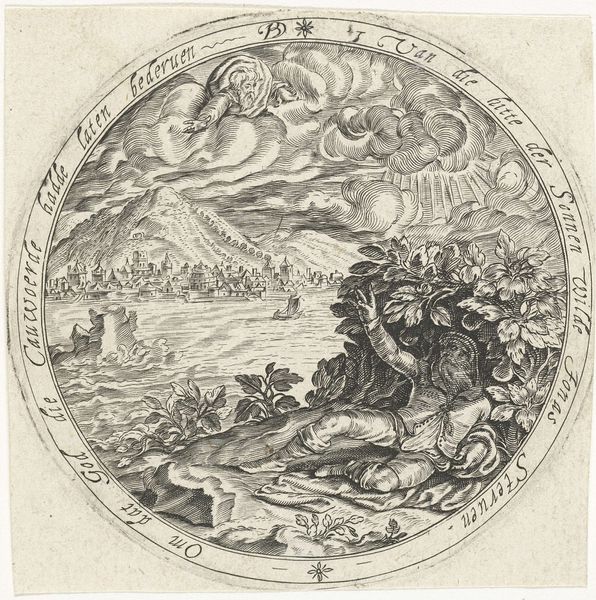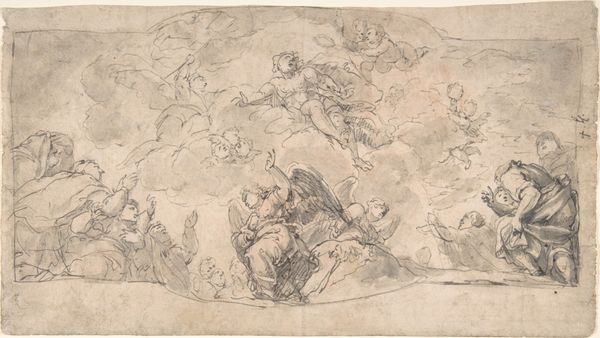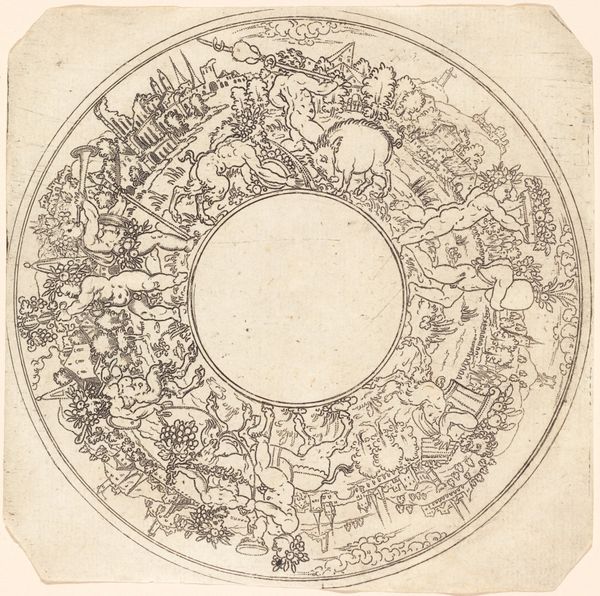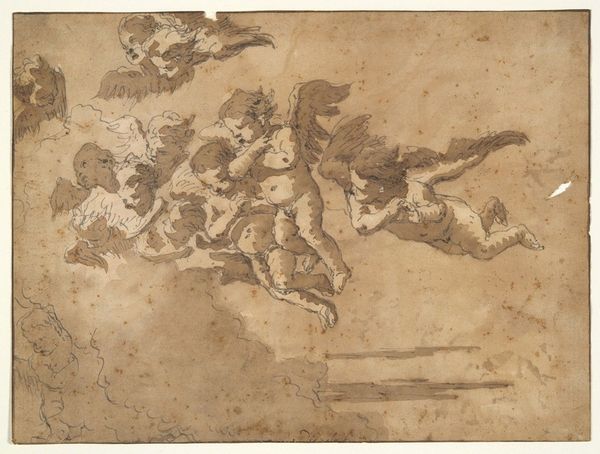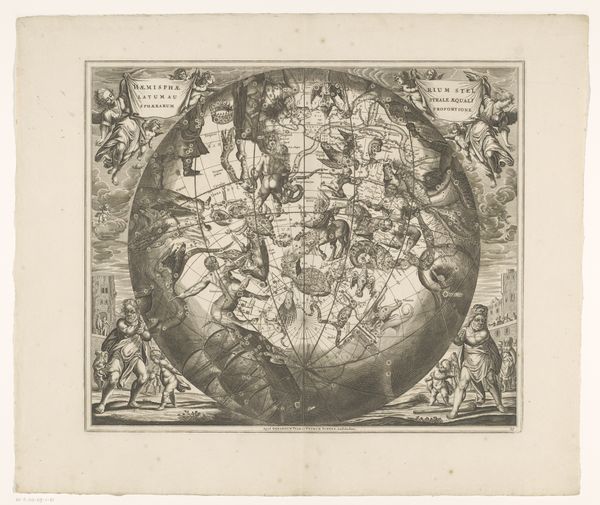
Dimensions: overall (approximate): 24.7 x 24.1 cm (9 3/4 x 9 1/2 in.)
Copyright: National Gallery of Art: CC0 1.0
Curator: Ubaldo Gandolfi’s 1781 pen and wash drawing, "The Apotheosis of San Vitale," presents us with a swirling Baroque scene. What’s your initial reaction to it? Editor: It feels incredibly dramatic and overtly celebratory. The diagonal lines converging towards the triumphant figure definitely create a sense of grand spectacle, reminiscent of theatrical staging. I wonder what sociopolitical functions shaped such iconography. Curator: Well, consider that the artist was commissioned to submit designs to decorate San Vitale in Ravenna. Note the forceful chiaroscuro that really animates the clouds, angels, and the titular saint ascending towards the light. Editor: Yes, I see the raking light emphasizing the texture. But tell me, who was San Vitale and what message was Gandolfi trying to project by glorifying his apotheosis at this historical moment? I am particularly drawn to the way the clouds are portrayed as sites of divine intervention. How does this intersect with larger religious discourses during the late eighteenth century? Curator: San Vitale was a 2nd-century martyr, a patron saint, making him a fitting subject. Technically, the composition utilizes dynamic asymmetry—the saint isn’t perfectly centered. The vigorous lines capture an almost palpable sense of movement and Baroque exuberance. Look at how that angel in the lower left corner anchors the visual weight, preventing it from all collapsing upward! Editor: Fascinating that you identify dynamic asymmetry in relation to social structures! But do the cherubic figures challenge or reinforce hierarchical gender roles of the time? Are they simply figures of religious adornment, or do they point toward evolving understandings of spirituality during that historical juncture? The clouds become allegorical for an accessible spirituality available to anyone. Curator: That’s an interesting interpretation! I might lean toward the more established artistic lineage. Considering the mastery of the medium alone is exciting; you can practically feel the artist’s hand at work. Editor: And I’m especially intrigued by how that artistic expression became linked to the prevailing ideology, revealing narratives of piety. Thank you for taking me through it with such expertise. Curator: Likewise. It's wonderful to analyze art like this through distinct, yet converging lenses!
Comments
No comments
Be the first to comment and join the conversation on the ultimate creative platform.
